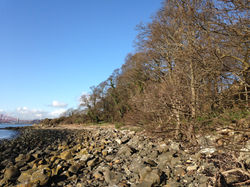Dalgety Bay Community Woodlands Group

 |  |  |  |  |  |  |
|---|---|---|---|---|---|---|
 |  |
Title. Double click me.
Title. Double click me.
Wildflower Spotting Sheets
As you walk the paths through our woodlands and wildflower areas you will pass by many different plants in flower and these will change as the seasons progress. Several people, both adults and their children, have expressed an interest in learning a little more about what plants they are seeing so I thought it would be useful to have a wildflower spotter sheet tailored to our area The first one is available to download through the link button below. (The file will be found in the Download section of your computer It does not open on this page) A preview is shown on the following page
Others will follow as different flowers begin to show. This can be used as a guide to some of the flowers you can see and also as a challenge to see if you or your children can find them all. The charity Plantlife also produces a spotter sheet www.plantlife.org.uk/wildflowerhunt/ but that includes many that are not to be found here and misses out several that are. I hope you find this interesting and enjoyable and that it adds a little additional pleasure to your walk.
Plants of the Woodlands
Some of the plants and flowers that you may see in and around the woods are show below. The list will grow as more photographs are available.
Deep Shade
Few plants can tolerate the deep shade beneath trees such as Sycamore that have a dense leaf canopy. Some, such as Brambles and Stinging Nettle will grow, but are weaker than those on the edges of the wood, but there are also a few plants that are adaprted to these conditions. We are fortunate in having one of them; Blubells or Wild Hyacinth are present in all of the woods and can be quite spectacular in some areas. In Bathing House Wood Male Fern flourishes, but only in the area beneath the Sitka Spruce towards the cliff of Downing Point.
 Hopeward Bluebells 29 Apr 2014 |  Hopeward Bluebells |
|---|---|
 Unfolding fronds of Male Fern BHW |
Woodland Edges
The plants seen here are usually those that flower in the dapled shade along the edges of the paths.
 Red Campion Bathing House Wood |  Hedge Woundwort |
|---|---|
 White Dead-nettle BHW |  Star of Bethlehem-BHW |
 Star of Bethlehem Bathing House Wood |  Red Dead-nettle |
 Cow Parsley Hopeward Wood |  Lesser Celandine Crow Wood |
Grassland Areas
The two main grass areas, at the edges of Crow Wood and Hopeward Wood, tend to have few flowers of interest, but this deficiency is now being addressed through the wildflower planting initiatives discussed elsewhere
Sea Cliffs and Associated Grasslands
This special habitat is seen mainly on Downing Point and the sea cliifs of Bathing House Wood. As much of the area faces south there is ample sunlight and little shade from the adjacent trees. The soil is thin and with exposure to the strong winds and salt spray that blast these areas from time to time, the flowers seen tend to be specialists able to tolerate these conditions. Gorse is well able to colonise these areas and left to its own devices would completely cover the area which is why gorse clearing from Downing Point is one of our targeted activities.
 Sea-Thrift-Downing-Point |  Cat's-Ear-Downing-Pont.jpg |  Bird's-foot-Trefoil-DP.jpg |
|---|---|---|
 Sea-Campion-Downing-Point |  Biting Stonecrop DP 26Jun14.jpg |  English-Stonecrop-Downing Point |
 Wild Thyme Downing Point |  Scots-Bluebells-DP-12Jul14 |  Scottish-Bluebells-DP-12Jul. |